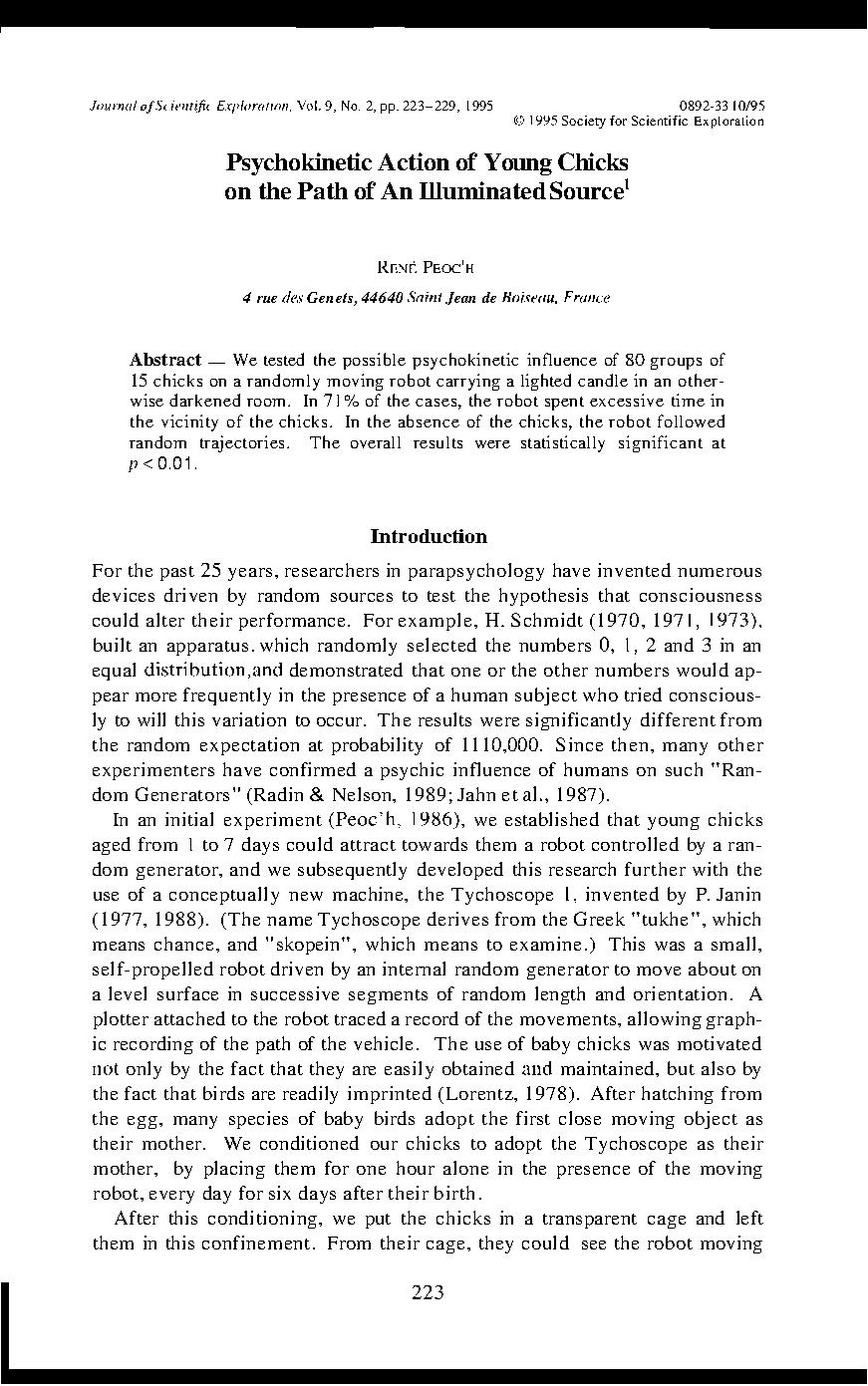Unsolved:Tychoscope
A tychoscope is a device used in parapsychology to study psychokinesis. It is shaped like a small tin can with wheels that receive directional impulses at random. The aim of the experiments is to influence the movements of the tychoscope remotely through thought alone.
Operation and history
The first tychoscopes, invented[1] and manufactured [2] by Pierre Janin in the years 1975-1980, are small mobile cylindrical devices, about ten centimeters on each side, moving along a random broken line: rectilinear paths of random length (approximately 1 to 10 cm), each followed by a rotation on the spot at an equally random angle[3]. A felt-tip pen slid vertically into the center of the device allows you to keep a written record of its movement, and you can also connect a flexible connector to the device allowing it to be routed and recorded on an external support, at analysis purposes, all the successive elements of its path (lengths and angles).
In 1980, Pierre Janin ended his manufacturing of tychoscopes, of which there were around twenty. Other models were later designed and manufactured by other researchers.
Experiments in parapsychology
A tychoscope was used in experiments conducted at Princeton Engineering Anomalies Research (PEAR) [4] [5] · [6] · [7]. PEAR's activities have been criticized for their lack of scientific rigor, poor methodology and poor use of statistics [8] · [9] [10] and have been qualified as pseudoscience[11].
In 1985, René Peoc'h supported a thesis in medicine relating to experiments with the tychoscope, notably with chicks[12]. The experiment on chicks consists of observing the behavior (theoretically random) of a tychoscope in the presence of chicks conditioned to follow the robot according to the mechanism of imprinting. According to René Peoc'h, the results of his experiments show that conditioned chicks psychically attract the tychoscope.
Peoc'h's experiment was criticized by Damien Triboulot for the Cercle zététique, invoking an edge effect concentrating the lines and that a "judicious sorting of the different lines obtained makes it possible to reinforce the effect. »[13]. According to Pierre Macias, edge effects are real but do not influence the experience because they apply to all edges, with or without chick[14]. Péoc’h was also criticized for not having allowed the observation.
Currently, other independent experiments of this type are unknown.
{{Sourceattribution|a|1}
- ↑
Tychoscope Language fr Publisher Les 3 orangers ISBN ISBN:978-2-912883-60-5 OCLC 470928170 - ↑ Thesis by René Peoc'h, p. 1 and 6.
- ↑ Thesis by René Peoc'h, p. 6-8.
- ↑ 1995 articles

- ↑ Article "Mind over Matter" in wired, read en line.
- ↑ consciousness and the source of reality : the PEAR odyssey", 22Princeton+Engineering+Anomalies+Research%22+tychoscope&hl=fr&sa=X&ved=0ahUKEwjJpbbUw97WAhXBPxoKHe7qCwsQ6AEIJjAA#v=onepage&q=%22Princeton%20Engineering%20Anomalies%20Research%22%20tychoscope&f=false read online.
- ↑ Article: Random Robot Redux: Replications and Reflections, read en line.
- ↑
Tychoscope Publisher online - ↑ Article ([{{fullurl:{{{1}}}|action=edit}} edit] | [[Talk:{{{1}}}|talk]] | [{{fullurl:{{{1}}}|action=history}} history] | [{{fullurl:{{{1}}}|action=protect}} protect] | [{{fullurl:{{{1}}}|action=delete}} delete] | [{{fullurl:Special:Whatlinkshere/{{{1}}}|limit=999}} links] | [{{fullurl:{{{1}}}|action=watch}} watch] | logs | views)
- ↑ Pigliucci 2010, p. aC8Baky2qTcC&pg=PA79 79.
- ↑
Tychoscope Editor University of Chicago Press ISBN ISBN:978-0-226-66787-4 - ↑ Thesis by René Peoc'h, read online.
- ↑ Review by Damien Triboulot, read online.
- ↑ Demonstration of the invalidity of the wedge effect hypothesis by Pierre Macias, .fr/critique/critique.html.
